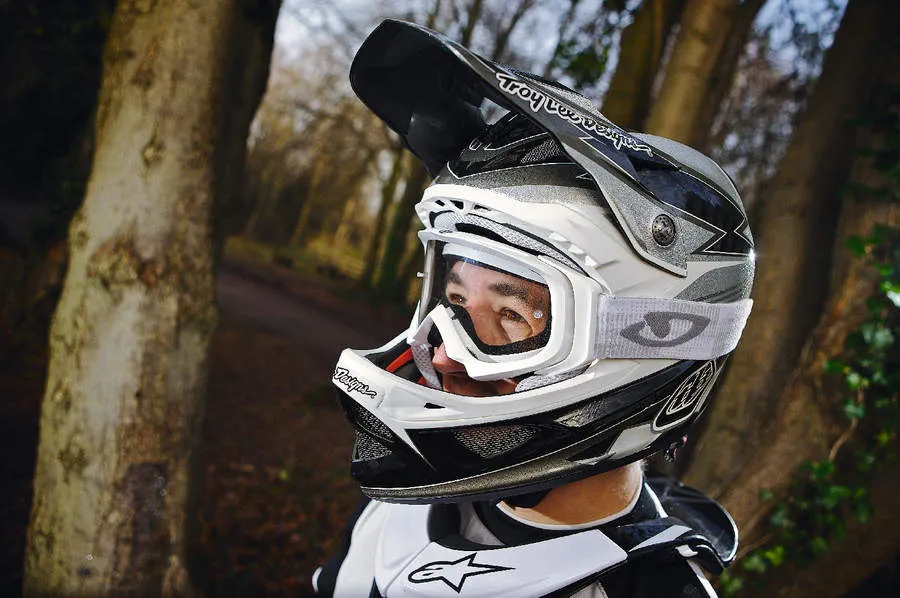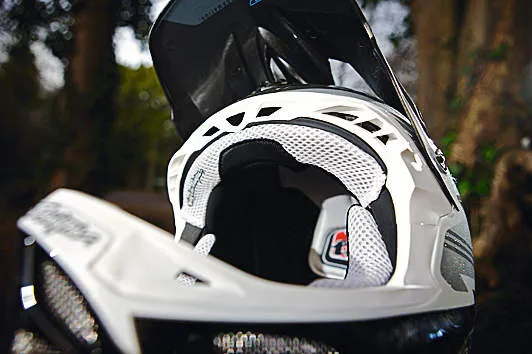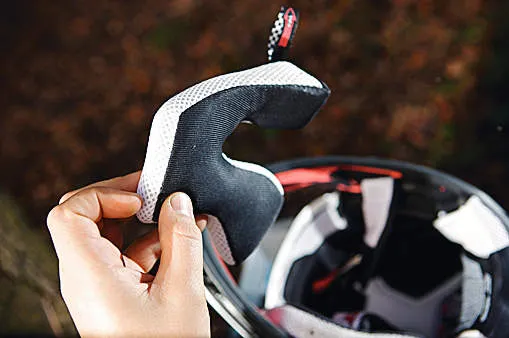The original Daytona version of this helmet appeared way back in 1995. It soon evolved into the legendary D2 helmet, which has been the benchmark in gravity headwear since 1998.
The D2 is a hard act to follow, and mere aesthetic tweaks weren’t going to cut the mustard. Aware of this, TLD have made ahuge step forward in safety and functionality, combined with a mix of aggressive looks and clean lines.
Reflecting the increase in speed of downhill races, the D3 helmet is bustling with new features to keep your noggin safe. Inside the carbon shell, the EPS (expanded polystyrene) liner has increased in thickness and is joined by new, shock absorbing, dual density pads.
While the larger chin guard gains the same dual-density padding, it’s also impact tested to the same level as a motocross lid – a first for a mountain bike helmet. In case of a neck injury, the quick-release cheek pads can be pulled out by medics to allow easy removal of the helmet to reduce further damage.
The moulded inlet vents surrounding the face-hole channel air into the helmet through venting channels inside, and out through exhaust ports in the rear. There are 20 of these heat-dispersing ducts littering the shell, including large, mesh lined ports in the chin guard allowing air to flow freely into your lungs.
The attention to detail is impressive, with titanium hardware, and the build quality is of the highest standard. With the extra protection comes some added girth, but at 1,130g it’s only 150g heavier than the D2.
The fit is tight, very much akin to a moto helmet, and is uncomfortably snug when you first pull it on. But you get used to it after a while, and the solid fit is more comfortable than the goggle-bashing movement you can get from a looser fitting head pot.
The venting is excellent, but once you stop, the snug fit accentuates that hot-headed feeling. Fitting and removing the helmet isn’t easy either, and those of you with ear piercings will have to take them out first.
It’s a supreme helmet of the highest quality, with a well thought-out design. The drawback of a £500 price needs to be put into perspective. It’s only £100 more than a D2 Carbon, and packs much more in. In the 'best of the best' category, it’s actually not bad value for money.
Our review scoring system has changed in 2010. Therefore recent reviews may have comparatively lower scores than past reviews. Click here for a full explanation of our ratings.


